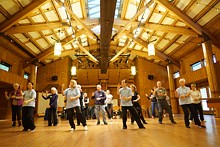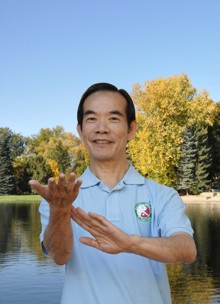2. The Tai Chi Principles
By: Dr Paul Lam
© Copyright Tai Chi Productions 2016. All rights reserved, no part of this article may be reproduced in any forms or by any means, without permission in writing, except for non-profit educational purpose. For example: you can pass on this link or photocopy this article for a paying student or participant as long as this article is not included as part of your charge.
Tai Chi was created based on the Traditional Chinese Medicine, martial arts and the law of nature known as the ‘Tao’. It incorporated knowledge going back for thousands of years in Chinese history. In recent years over 500 medical studies have shown tai chi improves muscular strength, flexibility and fitness; as well as improved relaxation, balance, immunity and other health benefits. However studies don’t show anywhere near the full extent of benefits tai chi can bring! Such as empowering you to develop serenity, inner strength and power, leading to more happiness and fulfilment.
The secret of tai chi’s near magical effect for health and wellness is the principles. They might seem simple but profound. Regular practice will enable you to discover the many layers of depth to develop your tai chi. I divided these principles into three main categories, based on my interpretation, forty plus years of practice and cross checked with up to date medical knowledge.
1.Movement Control
- Tai Chi movements are slow so that you can be mindful of them and integrate mind and body, they are smooth to facilitate serenity, and they flow continuously like water in a river. The continual flow gathers inner energy like the hydraulic power, growing as it flows.
- Move as though you’re moving against a gentle resistance with every movement to generate a soft inner power. Another good way is to imagine the air around you is becoming denser or as though you are moving in water.
2.Body Structure
- Maintain an upright posture. Studies have shown that good posture strengthens the Deep Stabilizer muscles which support the spine. It also provides more space for internal organs. What’s more, when you are upright you feel stronger and more positive. Qi flows better in a well aligned body. A poorly aligned body puts extra strain on the spine and compromises your balance.
- Be mindful of weight transference. Balance is an essential part of tai chi. Like nature, we are happier and healthier when in harmony.
- Loosen or ‘松 – Song ‘ the joints. You should relax when you do tai chi, but by relax we don’t mean let your muscles get floppy. Instead, consciously and gently stretch your joints from within. When your joints are Song, qi moves smoothly and powerfully through. Tensed joints hinder the flow of qi. Song strengthens the internal ligaments and muscles, enhancing the function of joints.
- Develop a state of mental quietness or ‘静 – Jing’. You are more mindful of the present and the self when you are Jing, allowing your mind to be quiet from within.
Related Articles:



